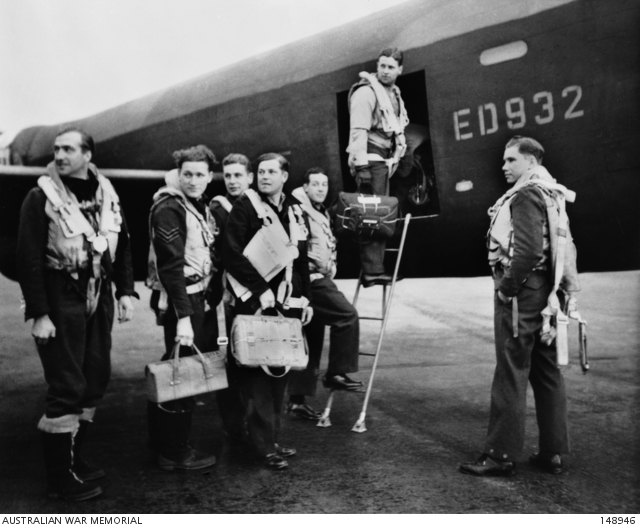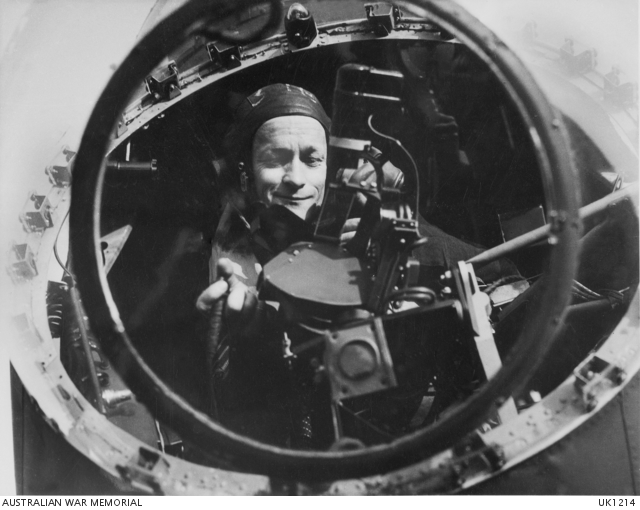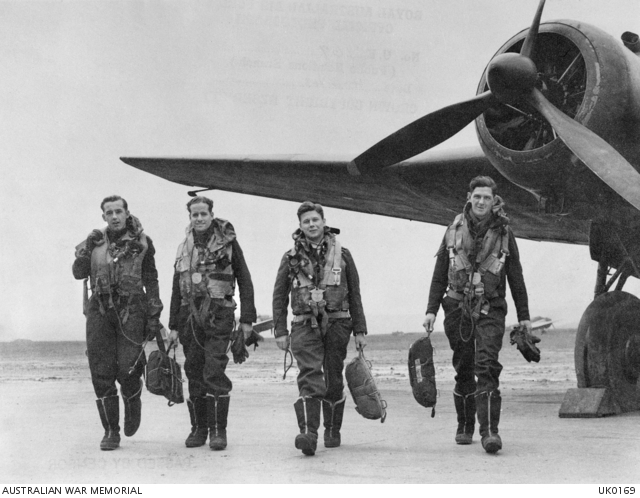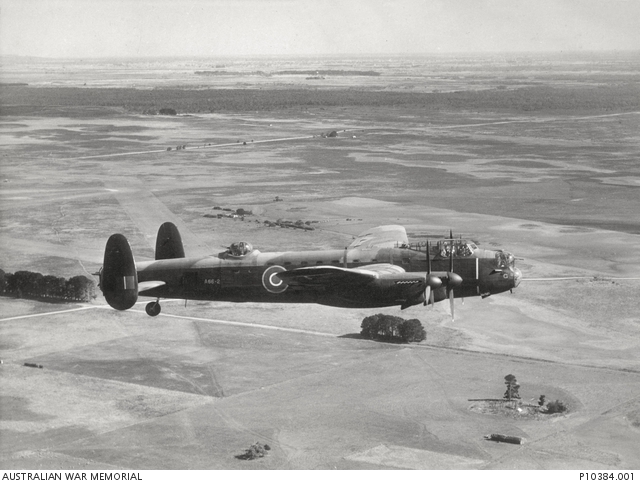RAF Bomber Command
During the Second World War, Britain's Royal Air Force was divided into a number of functional and geographic commands in line with an organisation that had first been implemented in 1936. Bomber Command was based in Great Britain and was responsible for bombing targets in enemy-controlled Europe. At the height of its operations in late 1944 Bomber Command comprised over 80 operational squadrons. These squadrons were organised into several groups on the basis of their role, the type of aircraft they operated, and the locations of the airfields from which they operated. In 1939 these groups were numbered 2-5 and by the end of the war Bomber Command comprised 1, 2, 3, 4, 5, 6 (Canadian), 8 (Pathfinder), 100 (Special Duties), and 91, 92 and 93 (Training) groups. Approximately 10,000 Royal Australian Air Force personnel served with Bomber Command and 3,486 were killed.
See collection items related to RAF Bomber Command
"G For George" Avro Lancaster
The Avro Lancaster B1, known with affection as "G for George", has a remarkable history. "G for George" flew eighty nine operational missions over Germany and occupied Europe during the height of the bomber offensive. From the time it was built in 1942 until its retirement from active service in 1944, the bomber was flown by No. 460 Squadron RAAF (when in Britain).
The plane has always been one of the most popular exhibits at the Australian War Memorial. After undergoing extensive restoration at the Australian War Memorial's Treloar Conservation workshops, it went back on display in Anzac Hall in "Striking by night", a permanent exhibition featuring a dramatic sound and light show that re-creates a night bombing operation over Berlin in December 1943. Three German Messerschmitt fighter aircraft also feature in the display.
Read more about G For George
England. Wing Commander G. P. Gibson DSO DFC, No. 617 Squadron RAF (1 at top of steps) with crew about to enter their Lancaster bomber aircraft ED932.
UK. C. 1943-06. 402851 Pilot Officer B. W. Coyle of Roseville, NSW (left) who belongs to a famous Mosquito Squadron of Bomber Command with Sergeant P. Harvey, RAF.
Duisburg, German. C. 1944-10. A 4,000 pounder and a shower of incendiaries leave the bomb bay of a Lancaster bomber high over Duisburg during an attack by RAF Bomber Command on that city.
Group photograph of No 460 Squadron RAAF, pictured on a Lancaster bomber.
The Lancaster Aircraft G for George of No. 460 Squadron RAAF, estimated to have flown 90 sorties (including strikes on Berlin, Munich, Hanover and other well known targets). This aircraft is now in the collection of the AWM.
Lancaster G for George, soon after arrival in Australia. Photograph taken in circuit area at No. 2 OAS Mount Gambier, 14 March 1945. Returning from a photographic mission, 431179 Flying Officer David Hamilton Hume identified G for George in the circuit area of the aircraft he was flying in. Indicating his camera to those in the cockpit of the Lancaster, the pilot of G for George slowed the bomber down for Hume to photograph it. This aircraft carried out 90 operational missions with 460 Squadron, RAAF over Germany and occupied Europe. G for George is held in the National Collection and is on display at the Australian War Memorial, Canberra
Media Contact
Contact Name
Media team
Contact Email
Contact Phone Number
02 6243 4575
Contact Mobile Number
0409 600 038








